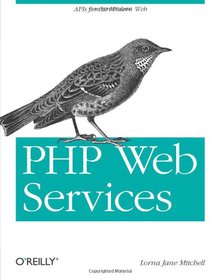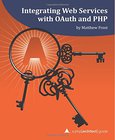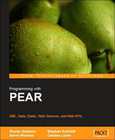PHP Web Services
APIs for the Modern Web

Book Details:
| Publisher: | O'Reilly Media |
| Series: | OReilly , Modern |
| Author: | Lorna Mitchell |
| Edition: | 1 |
| ISBN-10: | 1449356567 |
| ISBN-13: | 9781449356569 |
| Pages: | 118 |
| Published: | May 03 2013 |
| Posted: | Nov 19 2014 |
| Language: | English |
| Book format: | |
| Book size: | 10.2 MB |
Book Description:
Whether you're sharing data between two internal systems or building an API so users can access their data, this practical book provides everything you need to build web service APIs with PHP. Author Lorna Jane Mitchell uses code samples, real-world examples, and advice based on her extensive experience to guide you through the process-from the underlying theory to methods for making your service robust.PHP is ideally suited for both consuming and creating web services. You'll learn how to use this language with JSON, XML, and other web service technologies.Explore HTTP, from the request/response cycle to its verbs, headers, and cookiesDetermine whether JSON or XML is the best data format for your applicationGet practical advice for working with RPC, SOAP, and RESTful servicesUse a variety of tools and techniques for debugging HTTP web servicesChoose the service that works best for your application, and learn how to make it robustLearn how to document your API-and how to design it to handle errors
Download Link:
Related Books:
RESTful PHP Web Services
Representational State Transfer (REST) is a form of software architecture; systems that follow it are often called RESTful. It is the architectural style that drives the World Wide Web (the motivation for REST was to capture elements that made the Web successful), and RESTful web services use simple protocols already familiar to web developers. RESTful web services are found in lots of places with big name Web APIs such as Flickr, and Yahoo search following a REST-based approach. With any architectural style or approach, struggling with its basic concepts is just one problem implementation in your favourite language is another, and that's where this book comes in. If you're a PHP developer, this book will show you how to create and consume RESTful we...
Integrating Web Services with OAuth and PHP
A php[architect] Guide
Modern web applications are no longer standalone, monolithic codebases. Instead, they are expected to integrate with external, 3rd party applications to allow users to tap into new features, integrate with their social networks, and to easily migrate their data between systems. Many services afford these integrations by building web services that use the OAuth standard to authenticate users and allow "secure delegated access" on their behalf. There are two versions of OAuth. Version 1.0 as introduced introduced in 2007, and OAuth 2.0 was released in 2012. Integrating Web Services with OAuth and PHP describes the differences between the two versions, explains the jargon associated with each, and-most importantly-provides working PHP examples...
PHP Programming with PEAR
XML, Data, Dates, Web Services, and Web APIs
This book explains many powerful PEAR packages for maximizing your PHP development productivity for accessing and displaying data, handling dates, working with XML and Web Services, and accessing Web APIs. This book is for PHP developers who want to maximize their productivity through the use of proven, high-quality, reusable PEAR components. Some experience of working with PEAR classes will prove helpful, and developers who've used PEAR before can find something new to delight them....
2007 - 2021 © eBooks-IT.org



